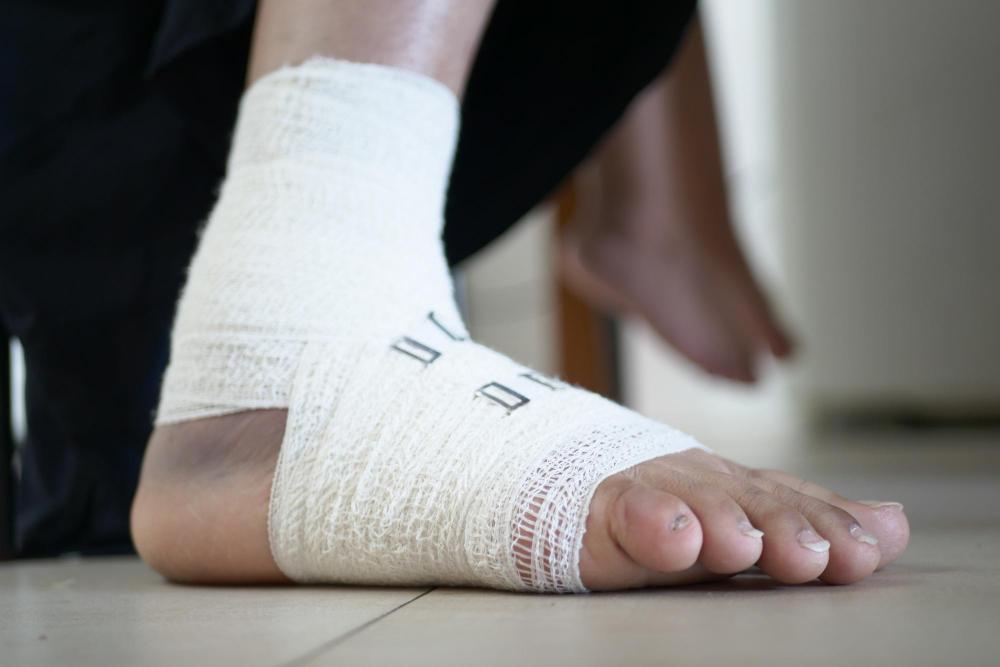How to Clean and Dress Your Wounds
 Wound care is a critical aspect of both first aid and post-operational healthcare, particularly when addressing injuries to the foot and ankle region. Whether dealing with cuts, abrasions, burns, or surgical incisions, proper wound care is essential to facilitate healing, prevent infection, and promote optimal recovery.
Wound care is a critical aspect of both first aid and post-operational healthcare, particularly when addressing injuries to the foot and ankle region. Whether dealing with cuts, abrasions, burns, or surgical incisions, proper wound care is essential to facilitate healing, prevent infection, and promote optimal recovery.
In this brief guide brought to you by Mountain Spring Podiatry, we’ll offer some introductory guidance on cleaning and dressing wounds on your feet and ankles. If you’d rather have a licensed podiatrist take care of this, then call the foot specialists at Mountain Spring Podiatry and schedule a foot care appointment for a convenient time.
Understanding Foot and Ankle Wounds
Foot and ankle wounds can result accidental injuries, surgical procedures, or chronic conditions such as diabetic foot ulcers. These wounds can vary in size, depth, and severity, requiring specific approaches to cleaning and dressing based on their characteristics.
Properly assessing the wound’s nature and any associated risks is crucial before initiating wound care. This is why chronic or severe wounds should be evaluated by a qualified foot doctor. Still, there is some foot care that you can perform yourself after consulting with your healthcare provider.
Guide to Cleaning and Dressing Foot and Ankle Wounds
Before we get to the wound, you will first need some supplies, including:
- Clean gloves
- Sterile saline solution or wound cleanser
- Sterile gauze pads or swabs
- Antiseptic solution (if recommended by healthcare provider)
- Sterile adhesive bandages or non-adherent dressings
- Medical tape or cohesive bandages
- Scissors (if needed to cut dressings)
Next, set up a clean and well-lit area for wound care. Make sure there’s enough space and access to supplies. Wash your hands thoroughly with soap and water or use hand sanitizer, then carefully remove any existing dressing or bandage, taking care not to disturb the wound.
Observe the wound’s size and depth and look for any debris or foreign objects as well as signs of infection (e.g., redness, swelling, pus). This is information you should provide your healthcare provider.
Let’s clean the wound. Put on clean gloves to prevent contamination and use sterile saline solution or a wound cleanser to gently irrigate the wound, removing debris, dirt, and bacteria. If recommended by a healthcare provider, apply an antiseptic solution to the wound area using sterile gauze or swabs,
To dress the wound, apply an appropriate dressing based on the wound type. For shallow wounds or abrasions, a non-adherent dressing or sterile gauze pad may be sufficient. For deeper wounds or surgical incisions, a sterile adhesive bandage or surgical dressing may be needed.
Secure the dressing in place using medical tape or cohesive bandages, ensuring it is snug but not too tight to restrict circulation.
Consult a Licensed Foot Doctor
Foot and ankle wounds can be debilitating, and it’s vital to address severe or chronic wounds with your healthcare provider. If you are looking for a dependable podiatrist in the area, then call Mountain Spring Podiatry to schedule an appointment for as soon as possible.
